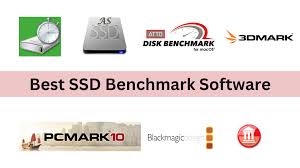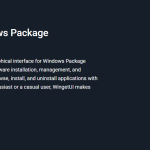When it comes to evaluating the performance of storage devices, CrystalDiskMark is one of the most widely recognized tools. Known primarily as a disk benchmarking utility, it measures the read and write speeds of hard drives (HDDs), solid-state drives (SSDs), and USB drives. For anyone managing web servers or hosting websites, understanding how storage performs under various conditions is critical because storage speed directly influences server responsiveness, data retrieval times, and overall user experience.
This article explores whether CrystalDiskMark serves well for benchmarking web servers specifically, and what factors to consider when using it for that purpose.
Understanding CrystalDiskMark and Its Purpose
CrystalDiskMark is a free, open-source benchmarking program designed to test storage devices by simulating different types of file operations. The tool conducts sequential and random read/write tests that emulate everyday disk usage.
- Sequential tests measure how fast large continuous data blocks are read or written, which is useful for large file transfers.
- Random tests simulate many small file operations occurring simultaneously, a situation closer to real-world multitasking environments such as web servers handling multiple requests.
The tool outputs results in megabytes per second (MB/s) or input/output operations per second (IOPS), allowing users to compare performance across different drives or configurations.
Key Performance Metrics for Web Servers
Web servers rely heavily on storage for reading files, handling database queries, caching, and logging. The performance metrics that matter most include:
- Latency: How quickly the server can respond to a single data request.
- IOPS: The number of input/output operations the storage device can handle per second.
- Throughput: The amount of data transferred over a period, usually measured in MB/s.
CrystalDiskMark primarily focuses on throughput and IOPS through its various tests. Understanding the correlation between these numbers and web server performance helps assess the tool’s usefulness for benchmarking servers.
CrystalDiskMark’s Advantages in Web Server Benchmarking
Several aspects make CrystalDiskMark attractive for assessing web server storage:
Simplicity and Accessibility
CrystalDiskMark provides a straightforward way to measure disk speeds without complex setup or configuration. It supports a variety of storage devices, making it easy for server administrators to get quick benchmarks.
Random Read/Write Testing
Since web servers often deal with multiple small files or database queries simultaneously, random read/write tests give insight into performance under realistic conditions. CrystalDiskMark’s 4K random tests, for example, simulate small block transfers common in web hosting environments.
Comparative Analysis
It’s helpful for comparing different storage solutions, such as traditional HDDs versus SSDs or newer NVMe drives. By running the same test on different drives, server managers can make data-driven decisions on upgrades.
Limitations of CrystalDiskMark for Web Server Benchmarking
Despite its advantages, CrystalDiskMark also has limitations when applied to web server benchmarking:
Synthetic Testing Does Not Equal Real-World Workloads
CrystalDiskMark performs synthetic benchmarks that simulate generic file operations but do not fully capture complex web server workloads involving application logic, network delays, or database transactions. Real server environments often involve layered caching, simultaneous connections, and protocol overhead that this tool cannot replicate.
Focus on Raw Disk Performance
The tool measures raw disk throughput and IOPS but does not account for how file systems, RAID arrays, or caching layers affect real-world web server performance. For instance, a high IOPS score may not translate into faster website response times if other bottlenecks exist.
Limited Network and Server Application Testing
Web servers operate within a networked environment where bandwidth, latency, and server application efficiency matter greatly. CrystalDiskMark tests storage performance locally but cannot assess network performance, HTTP server configuration, or database query optimization, which are crucial for overall web server speed.
Complementary Tools for Web Server Benchmarking
Relying solely on CrystalDiskMark risks missing other performance factors essential to web servers. Other benchmarking tools can provide complementary insights:
- ApacheBench (ab): Measures HTTP request handling capabilities of a web server.
- Siege: Load testing tool to simulate user traffic.
- ioping: Monitors storage latency and response times similar to ping but for disks.
- Database benchmarks (like sysbench): Help test how database storage impacts query speed.
- Network monitoring tools (Wireshark, iperf): Analyze network bottlenecks affecting server performance.
Combining these tools with CrystalDiskMark can provide a holistic picture of web server performance.
Best Practices for Using CrystalDiskMark in Server Contexts
To maximize the value of CrystalDiskMark for web server benchmarking, consider these tips:
Run Tests on Representative Storage Volumes
If the server uses RAID arrays, SSD caching, or virtualized storage, run benchmarks on those specific volumes rather than raw disks to get realistic results.
Use Multiple Test Passes
Disk performance can vary depending on temperature, caching, and load. Running multiple test passes at different times provides more reliable averages.
Focus on Random Read/Write Performance
Web servers benefit most from good random IOPS performance due to the nature of multiple simultaneous small file requests.
Avoid Running Tests During Peak Server Usage
Disk benchmarking tools like CrystalDiskMark stress the storage device and can impact live server performance. Use them during maintenance windows or on test servers.
CrystalDiskMark Compared to Other Disk Benchmark Tools
Other disk benchmarking tools include ATTO Disk Benchmark, AS SSD Benchmark, and HD Tune. Here’s how CrystalDiskMark compares:
- ATTO: Strong for testing a wide range of file sizes, useful for storage vendors.
- AS SSD: Focuses on SSD-specific tests including access times and compression performance.
- HD Tune: Combines benchmarking with health monitoring and error scanning.
CrystalDiskMark stands out due to its simple interface, open-source availability, and focus on both sequential and random performance metrics that closely match common web server workloads.
Case Studies: Using CrystalDiskMark to Improve Web Server Performance
Example 1: SSD Upgrade Decision
A hosting company tested several SSD brands using CrystalDiskMark before selecting drives for their new web servers. Random 4K write and read results helped narrow down to models with superior small file performance, translating into faster database access and page load times.
Example 2: Troubleshooting Slow Storage
An IT team noticed website delays and ran CrystalDiskMark on the server storage. Low random IOPS results indicated an aging HDD struggling under the load. After upgrading to SSDs, they saw significant improvements in site responsiveness.
Storage Trends Affecting Web Server Performance
Web servers increasingly rely on faster, more reliable storage technologies such as NVMe SSDs and persistent memory. CrystalDiskMark continues evolving to support these devices, enabling administrators to benchmark the latest hardware efficiently.
Cloud hosting providers also offer virtualized storage options, where benchmarking is less straightforward. In such cases, CrystalDiskMark results must be interpreted carefully alongside cloud provider SLAs and network latency.
Conclusion
CrystalDiskMark is a valuable tool for measuring raw storage device performance, especially when focusing on sequential and random read/write speeds. Its strengths in simplicity and realistic random I/O testing make it a useful component of a broader web server benchmarking strategy.
However, relying solely on CrystalDiskMark will not capture all the nuances of web server performance. Combining it with other application-level and network tests provides a more comprehensive understanding.








